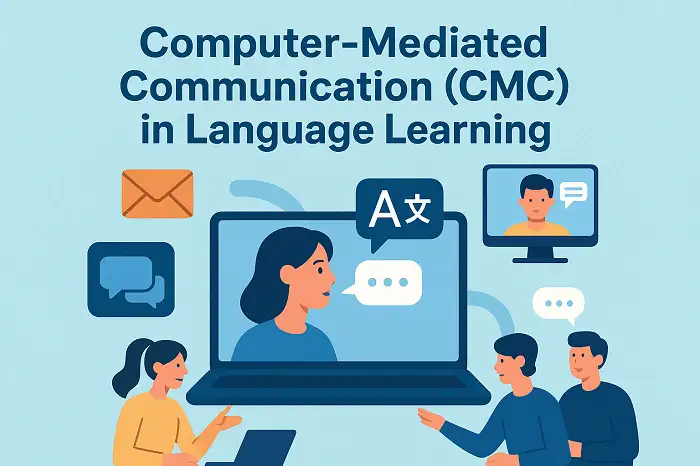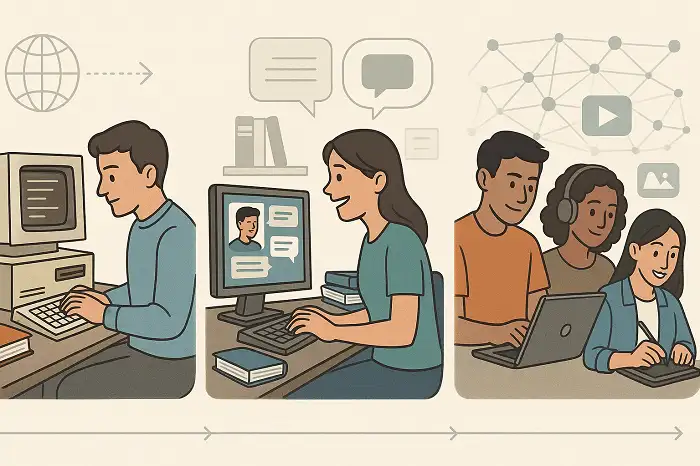Table of Contents
- Watch this video on: learn English vocabulary with pictures
- Why learn English vocabulary with pictures?
- Visual learning vs. translation
- Activate the right hemisphere of your brain
- Using multimedia for vocabulary learning
- Visual vocabulary in categories
- Visualization in vocabulary learning
- Visual learning for people with hearing loss
- Learn one visual word every day
- Learn English vocabulary thematically
- Maximize your visual learning with useful sections
- Learn English vocabulary in context with images
- New English vocabulary with pictures
Do you want to learn English vocabulary with pictures to remember new words for a longer period of time if not forever? Visual learning is an effective way to learn English vocabulary for longer retention. In addition, learning vocabulary with images compared to plain text can make vocabulary learning more fun.
Watch this video on: learn English vocabulary with pictures
Why learn English vocabulary with pictures?
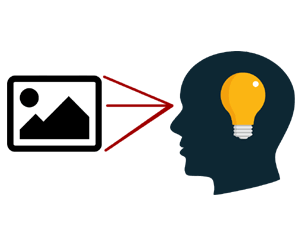
If you learn English vocabulary with pictures and images, you’ll learn new words more easily and for a longer period of time because, from a neurological point of view, your brain automatically makes some associations between the visual words and their meanings and concepts. This becomes even more important when you need to learn abstract vocabulary which don’t have any specific physical or tangible manifestation.
Clarity is so crucial for the brain to learn and remember the information. When you try to memorize a myriad of abstract vocabulary, such as egotist, vivacious, agoraphobia, carpe diem, finicky, parody, etc., you little by little tend to forget them when hundreds or thousands of these abstract words are stacked up in your mind in a superficial manner.
Comparatively, you can click on the hyperlinks in the preceding paragraph, learning those abstract words through visual learning. It is quite obvious that you can learn and remember these selected abstract words in English more effectively with the provided pictures.
Visual learning vs. translation

Learning vocabulary in context with pictures is a more effective way compared to translating them into your mother tongue. This is because learning vocabulary through translation cannot make robust connections between words and meanings to recall information successfully. Furthermore, it is important to note that your brain is chiefly an image processor, and not a very efficient word processor. In fact, your visual cortex is relatively larger and more developed compared to the part of your brain that processes abstract words.
To compare text and pictures, it should be noted that text is a combination of codes that need to be decoded and interpreted to understand the intended meaning. So, text is not instinctive. On the other hand, pictures are innately and instantaneously recognizable and understandable. That’s why pictures are more easily memorable in comparison to text.
Activate the right hemisphere of your brain
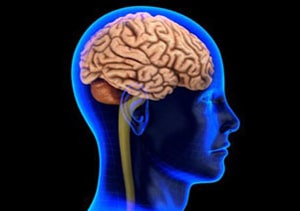
The word, lateralization, in neurology means that the left and right hemispheres of the brain are specialized in processing and interpreting specific sensory inputs to make sense of what is happening around us. With regard to lateralization, it’s interesting to know that language learning generally occurs in the left side of the brain. As a result, by learning a second language, you’ll be using the left hemisphere of your brain more dominantly in comparison to the right side of your brain.
When you learn English vocabulary with pictures, you’ll be using both of your brain hemispheres at the same time. Accordingly, your brain will be used holistically and effectively to take care of vocabulary learning in a more meaningful and profound manner. This is because processing and interpreting visual data like pictures mainly takes place in the right hemisphere of your brain. This is technically referred to as picture superiority effect, which means that a person can notice and recall a picture more easily and quickly in comparison to plain text. That’s why in English we say, “a picture is worth a thousand words”.
Using multimedia for vocabulary learning
At LELB Society, we’ve transcended using merely visuals to facilitate learning English vocabulary. Recently, we’ve embedded videos and podcasts in each vocabulary lesson to practice listening comprehension as well. Moreover, thanks to our installed text-to-speech software program, our students can easily select any text and listen to the selected text on-demand.
It is important to note that learning vocabulary in our online community is not simply restricted to using visuals and pictures. In fact, visual learning is just one aspect of our comprehensive vocabulary enrichment package. Our users can learn advanced English vocabulary in real context and examples with clear definitions, synonyms, antonyms, parts of speech, videos, podcasts, and interactive comment forms.
Visual vocabulary in categories
The growing category of English vocabulary in context with pictures at LELB Society includes the vocabulary items from the following vocabulary books or packages:
- 504 Absolutely Essential Words
- 1100 Words You Need to Know
- 601 Words You Need to Know
- GRE Vocabulary Flashcards in Real Context
- Vocabulary for the College-Bound Student
Visualization in vocabulary learning
Illustrated flashcards at LELB Society are so useful for visual vocabulary learning. To learn each visual word, we recommend you scan the photo with your eyes even before reading the definition. Then, closing your eyes, try to make connections or associations between each word and its meaning through visualization in your mind without any verbalization.
In the next stage, to reinforce your mastery, you can proceed to read the definition and real example for each word in our visual dictionary and thesaurus. In the end, if you have any questions about each visual word, leave them in the comment box at the bottom of each vocabulary item and expect to receive our detailed clarification and assistance immediately.
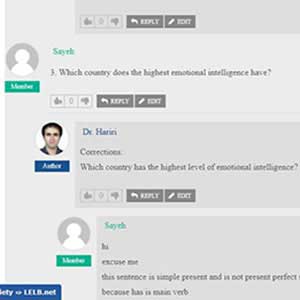
Moreover, you can use our comment forms at the bottom of each visual word, making your own sentences about each visual vocabulary entry in our picture dictionary and receive our professional feedback. We will correct any mistake you may make in your examples in the comment forms on the basis of the comprehensible output hypothesis, according to which second language users acquire the correct forms of language by failing to transmit a message and having to try again in interaction with language partners or native speakers.
Visual learning for people with hearing loss
People with hearing loss tend to become more visually-oriented learners as they try to compensate for their hearing disability through visual learning. LELB Society is pleased to announce that our visual dictionary and thesaurus in real context can be of great assistance to ESL students with hearing impairment. With our carefully illustrated flashcards, hearing impaired students can easily remember highly abstract vocabulary because these visuals and pictures are intended to add meaning and life to plain text.
In other words, people with hearing loss can perfectly learn English vocabulary with pictures and turn even the most abstract vocabulary into concrete words. We provide free education for persons with disabilities because Dr. Mohammad Hossein Hariri Asl, the founder of LELB Society is also visually impaired. The use of multimedia files including visuals is crucial for teaching vocabulary to the deaf or people with hearing impairments. For these students, the use of word walls and semantic maps is also advisable.
Learn one visual word every day
Our premium resources at LELB Society are getting better and better every day. This is because our bilingual academy of English and Persian is in fact a wiki whose content is developed by the team of our contributors, such as authors, teachers and website developers. Among all our resources, the category of English vocabulary in context with pictures is the most significant educational package in our online community.

To give you a hint about the dynamic feature of our growing vocabulary category, we call your attention to the bottom of this post where you can see the latest visual vocabulary items published at LELB Society with date stamps. As we don’t use any newsletter for privacy issues, we encourage you to follow LELB Society on our social media platforms, particularly Instagram and YouTube, listed at the footer of our website to stay notified of our newest lessons and posts.
Learn English vocabulary thematically
In our visual dictionary and thesaurus, you have this unique opportunity to learn English vocabulary with pictures in themes or topics that are semantically related. As a result, you can expand your vocabulary and learn English for specific purposes. For instance, the following archived pages or tags consist of all visual vocabulary about music, technology, science, art, education, happiness, psychology, and the like.

You can browse all the popular tags that are used in our posts and pages at LELB Society. In fact, all current posts and pages that exceed 4200 ones (March of 2023) are thematically related to each other like a cobweb or network of visual words or phrases. This is one of the reasons for which, according to SimilarWeb.com, the average visit duration of each user at LELB Society is over one hour, which is almost unprecedented.
Maximize your visual learning with useful sections
The picture dictionary of LELB Society is not just limited to visual learning as ESL students can take their vocabulary mastery to the next level and maximize their educational experience. To give you a better perspective on learning English vocabulary with images, we call your attention to the following sections for each visual vocabulary item in our picture dictionary:
- Breadcrumbs as a navigational aid to show our students their current location on our language learning website
- Expressive and vivid picture or illustration for each vocabulary item with little exaggeration to arouse more emotion and awareness in ESL students
- International Phonetic Alphabet (IPA) to pronounce and enunciate each word phonetically accurate
- Table of Contents to navigate through different sections more easily with a single click to enjoy a better User Experience
- Simple and clear definition of visual words
- Synonym of each word to expand the range of your academic vocabulary with our visual thesaurus
- Video of each word embedded in the lesson to learn English with multimedia and improve your listening comprehension as well
- Real context in which each word or phrase has been used to add contextualization to visualization and improve your reading comprehension as well
- Antonym of visual vocabulary (if there is any) to learn English vocabulary with synonyms and antonyms
- Part of speech of visual vocabulary to learn the noun, verb, adjective, and adverb form of each word
- Text-to-speech functionality
- Tags of each word to expand your vocabulary in relevant themes or topics
- Previous or next post navigation to browse our visual vocabulary from a chronological point of view
- Related lessons for each single visual word to enrich your word knowledge with 5 related vocabulary that are selected thematically
- Interactive comment box at the bottom of each post to ask us your questions in either text or audio for our professional feedback, assistance or clarification
Learn English vocabulary in context with images
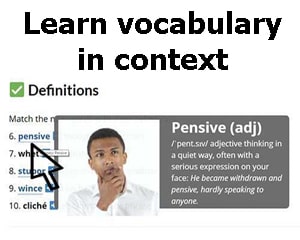
As mentioned earlier, at LELB Society, your educational experience is not restricted to visual learning when it comes to vocabulary enrichment. As the above photo illustrates, in our online community, you have this unique chance to learn visual words in real context, namely movie scripts and film criticism, song lyrics, good English documentaries, great short stories in English, and scientific articles.
We use content-based instruction or CBI to give more priority to interesting, useful and challenging content or subject matter as our language resources. CBI has been proved to be effective in immersing ESL students in English because it can increase the level of motivation in English students. When learners realize that they’re learning something else worthwhile except English, they’ll be more enthusiastic about continuing and optimizing their language learning process.
New English vocabulary with pictures
The following are the latest vocabulary items with images used in authentic context with synonyms, antonyms, multimedia files, and parts of speech. All these visual words are thematically categorized for those ESL learners who have a thirst for learning vocabulary in associated themes or topics.
- Chasm Definition in Context with Images & Synonyms
- Apogee Definition & Meaning in Context with Images
- Satire Definition & Meaning in Context with Images
- Morbid Definition & Meaning in Context with Images
- Lesion Definition & Meaning in Context with Images
- Hypochondria Definition & Meaning in Context with Images
- Parasite Definition & Meaning in Context with Images
- Lackey Definition & Meaning in Context with Images









